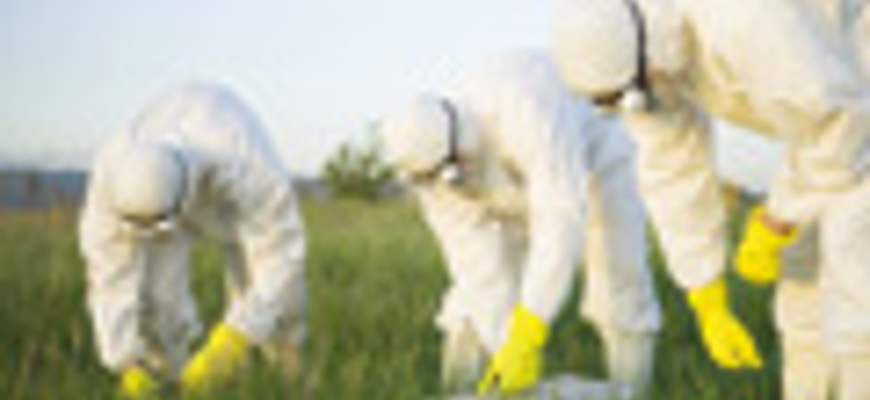Lifting the stones

A report issued by SEPA, the Scottish Environment Protection Agency, on 26 May this year confirms that as at March 2008 only 13 sites had been identified as contaminated land in Scotland. Time for purchasers to breathe a sigh of relief and practitioners to stop ordering desktop reports, you might think? In fact, the opposite is true, particularly where land is not being purchased for redevelopment.
This is the first report that SEPA has issued in terms of its obligation under the Environmental Protection Act 1990 (“the Act”) to report on the state of contaminated land in Scotland. It summarises the actions taken by SEPA and local authorities under the contaminated land regime since it was introduced in 2000. The report is remarkably similar to one issued by the Environment Agency in England & Wales in January this year. This is therefore an ideal time to compare the implementation of the regime (here referred to as the Part IIA regime, after the relevant part of the Act) on both sides of the border to date.
As the environment is a devolved matter, separate guidance under the Act was developed and issued north and south of the border. The legislation and guidance follow the “suitable for use” approach, where risks are assessed and only the minimum necessary remediation for the current/potential future use is required. Therefore, while the guidance gives more detail on how risks should be assessed, in general the regulatory authority is left to determine whether the level of risk means action is required.
While the guidance is not substantially different north and south of the border, the two reports suggest some differences in implementation of the Part IIA regime, which is not surprising considering the large number of subjective elements. This article will examine the key differences highlighted by the reports, and the resulting implications for purchasers of land in Scotland.
The reports do not entirely overlap, and the lack of a consistent approach makes comparison between statistics difficult. I intend to focus on three particular areas, which I believe are of critical importance to purchasers and their solicitors in Scotland:
- the number of sites identified to date and how these sites have been handled by the authorities;
- the statistics on remediation outside the Part IIA regime; and
- the inspection regimes of the regulatory authorities and the likely number of inspections going forward.
Sites identified as contaminated
As at the date to which each report was compiled (31 March 2008 in Scotland; 31 March 2007 in England & Wales), 13 sites had formally been identified in Scotland, and 781 in England & Wales. However, in England & Wales a number of residential housing estates have been identified, each house being formally designated a contaminated site. The EA report estimates that there are probably 100-150 areas of contaminated land when this is taken into account. There are a number of factors to consider about the differences between England and Scotland, including hectarage, population and size of local authority areas, and when these are all taken into account the disparity in the figures becomes much smaller, although broadly the statistics suggest English authorities are better at picking “winners” when they inspect land.
Some interesting issues are raised when the detail in each report is considered:
(1) The number of areas of contamination identified in England would appear to suggest that either the English authorities are taking a stricter approach to identifying land as contaminated,or their strategies for inspection are different, leading to a higher “hit” rate of sites which will ultimately fall under the Part IIA regime.
(2) Housing use accounted for 91% of English and 98% of Welsh sites when inspected under the Part IIA regime. The SEPA report does not specifically include this information, but it appears that only two of the 13 sites in Scotland included residential land. Due to the small number of contaminated sites in Scotland, it may be impossible to extrapolate any meaningful data from these figures. They certainly do not discount, however, either of the assumptions made above regarding the differences between approaches north and south of the border. It will be interesting to see whether Scotland’s regulatory authorities will start to mirror this approach over time, or continue to focus on industrial/derelict areas.
(3) Once sites have been formally identified as contaminated, regulatory authorities have to determine responsibility for the costs of remediation, and the level of remediation required, a complicated and it appears time-consuming task. Remediation statements, declarations or notices are then issued. Of the 13 sites in Scotland, documentation had been issued for 11, whereas in England it had only been issued for approximately 40% of sites. While the reason for the disparity is not obvious, and again taking into account the low number of sites in Scotland, this would suggest that Scottish authorities wait until more information is available to issue this documentation before formally identifying sites as contaminated. This may therefore mean that Scottish authorities have more sites “on their books” which they are inspecting and assessing and which have not reached the point of being legally identified as contaminated.
The risks for purchasers in Scotland should therefore be obvious: just because a piece of ground is not on the register of contaminated land does not mean that the regulatory authority does not have its eye on it. Additionally, just because the number of identified sites is significantly smaller in Scotland does not mean that the authorities are not taking the issue seriously and working at identifying contaminated sites just as hard as English authorities.
Alternative routes to remediation
Both reports confirm that the legislation has resulted in owners considering contamination and dealing with it outwith the Part IIA regime, and acknowledge that this was one of the intentions of the Act. Remediation can be carried out either voluntarily or through the planning system. In Scotland planning authorities must consider contamination and whether remediation is required when a new use is applied for in relation to an area of ground. The SEPA report reveals the following statistics:
Approximately 13,400 sites have been investigated via the planning system, broadly the same number as investigated through Part IIA. Interestingly, the EA report suggests that only 10% of sites have been managed through Part IIA in England, which suggests that the planning system is much more successful there than the Part IIA regime.
Local authority officers have been consulted in relation to 4,350 sites where, presumably, an owner or potential purchaser is considering dealing with potential contamination voluntarily or through the planning system. The EA report has no comparable data for England & Wales.
Approximately 1,864 hectares of ground have been remediated through the planning system. SEPA acknowledges that more ground may have been voluntarily remediated for which the authorities have no data.
It is therefore clear that in Scotland the planning system is statistically having just as large an impact on the number of sites being considered as Part IIA. Whether the planning system would have reached this approach without Part IIA having been implemented is an interesting question, but not one there is scope
to consider here. The fact that remediation is often a condition of planning permission being granted means that purchasers of land for redevelopment are now routinely obtaining at least a desktop environmental report, and this is to be welcomed if owners are truly to understand the risks of contamination in relation to their land.
Inspection regimes
In terms of the Act, local authorities are obliged to produce strategies on how they will identify contaminated land within their area, and the statutory guidance directs them to do so in a rational manner and ensure their resources are prioritised on investigating areas most likely to be identified as contaminated. The EA and SEPA reports confirm the estimates being used by the authorities for potentially contaminated sites: 300,000 hectares in England & Wales (approximately 2% of total land area), and 82,587 hectares in Scotland (approximately 1% of total land area). In Scotland that equates to 67,000 potentially contaminated sites.
The SEPA report confirms that only 40% of these have been investigated to date. That leaves about 40,000 sites in Scotland which have not yet been investigated, and that should concern purchasers of land where historic land use might suggest contamination. It is hoped that the likelihood of authorities identifying land as contaminated as a result of such inspections should tail off over time if the strategic approaches have been prepared correctly. But it is worth bearing in mind that SEPA estimate that in Scotland 3,200 inspections were taking place every year over the last few years, which presumably will continue until all the sites have been investigated. The potential costs associated with a site being identified as contaminated, and the potential disruption to a business, mean purchasers should think carefully about carrying out their own investigations prior to purchase to assess that risk on their own.
While desktop environmental reports are now commonplace when land is purchased for redevelopment, the same cannot be said for land that has had a historic use associated with contamination, but for which no change of use is considered likely by the purchaser. The advice given in the statutory guidance to local authorities in relation to forming a strategic approach to inspecting land suggests they should take into account a number of matters, including the specific local circumstances in their area, such as historic industrial uses, any information already available to them, the nature and timing of past redevelopment, the extent to which remediation action has already been taken and the extent to which other regulatory authorities are likely to consider contamination. Taken together these may suggest that an authority is not going to give high priority to a site where redevelopment has taken place and the planning authority has therefore been involved and considered contamination (recently redeveloped sites).
The same cannot be said for land where the use is not going to change, however, and on that basis I would suggest that purchasers of land for a continuing use, while not being forced to estimate the risks of contamination through the planning system, should be equally concerned to consider these risks to establish whether there is a chance that their site may be inspected by the local authority at a future date.
Gillian Orr is a real estate solicitor who specialises in the sale and purchase of potentially contaminated land. She most recently worked as an associate at MacRoberts LLP, but moved this year to Austin, Texass
In this issue
- Planning's big day
- Hair alcohol tests: tackling the root of the problem
- Ask not...
- Trainee recruitment must be more open
- Honest talking
- Out, but not down
- A budget to save the world?
- Uncertain rights
- Copycats: nine lives used up?
- A break from illness?
- On the record
- From the Brussels Office
- Member support: the next level
- Legal practice reinvented
- Beat the pandemic
- Ask Ash
- A vintage problem?
- Final is still final
- Blacklisting blacklists
- A better fitting kilt
- Proper restraint
- Scottish Solicitors' Discipline Tribunal
- Website review
- Book reviews
- Knowledge rules OK?
- Lifting the stones
- Legitimate finding or mortgage fraud?
- Islamic finance: a Scottish lead?
- Environmental Law Centre: taking issues






